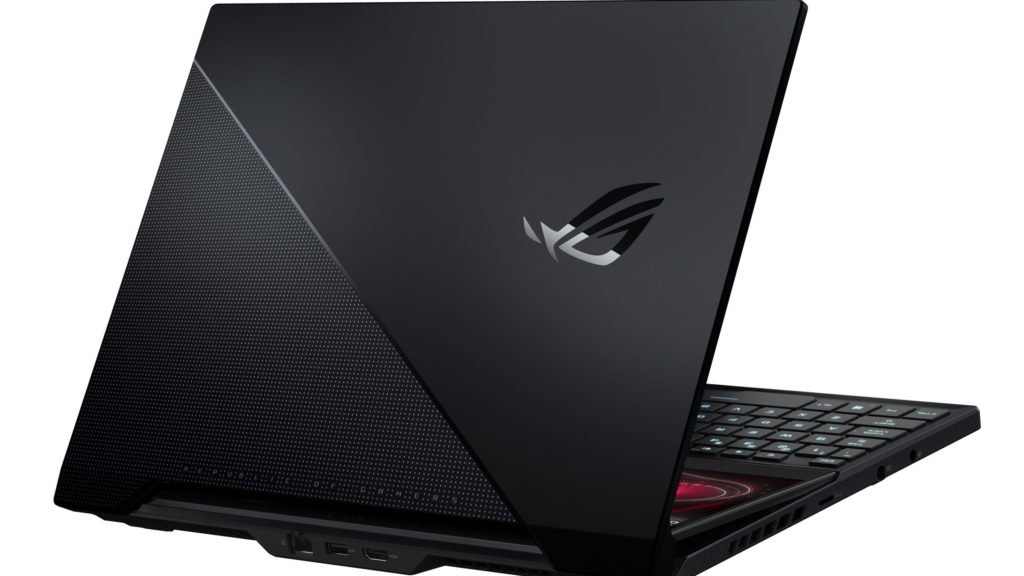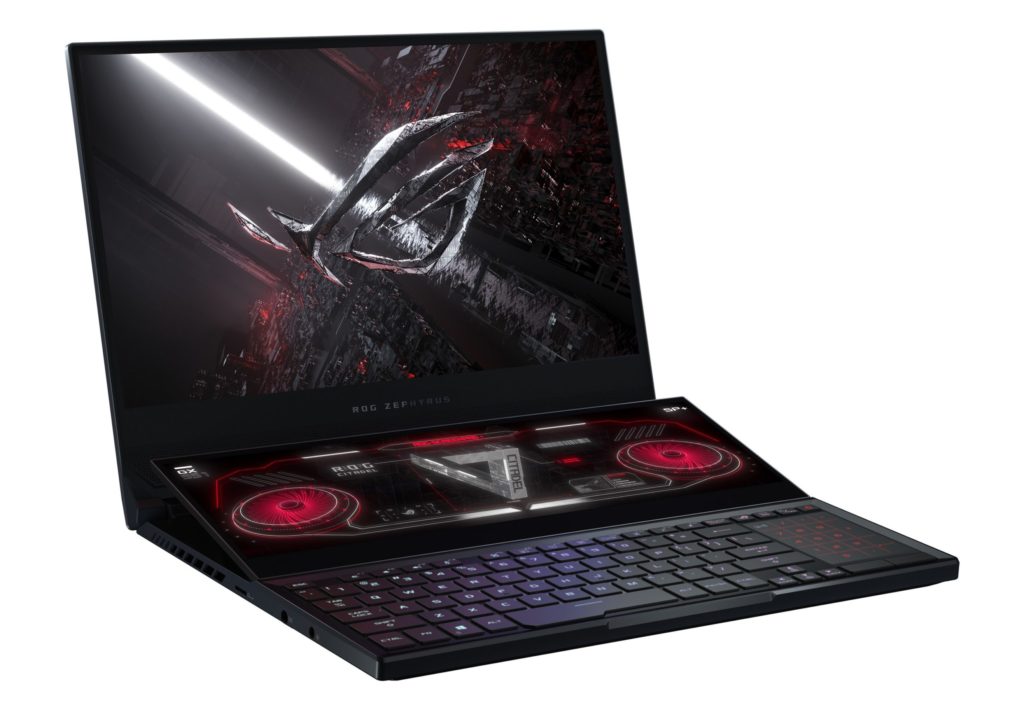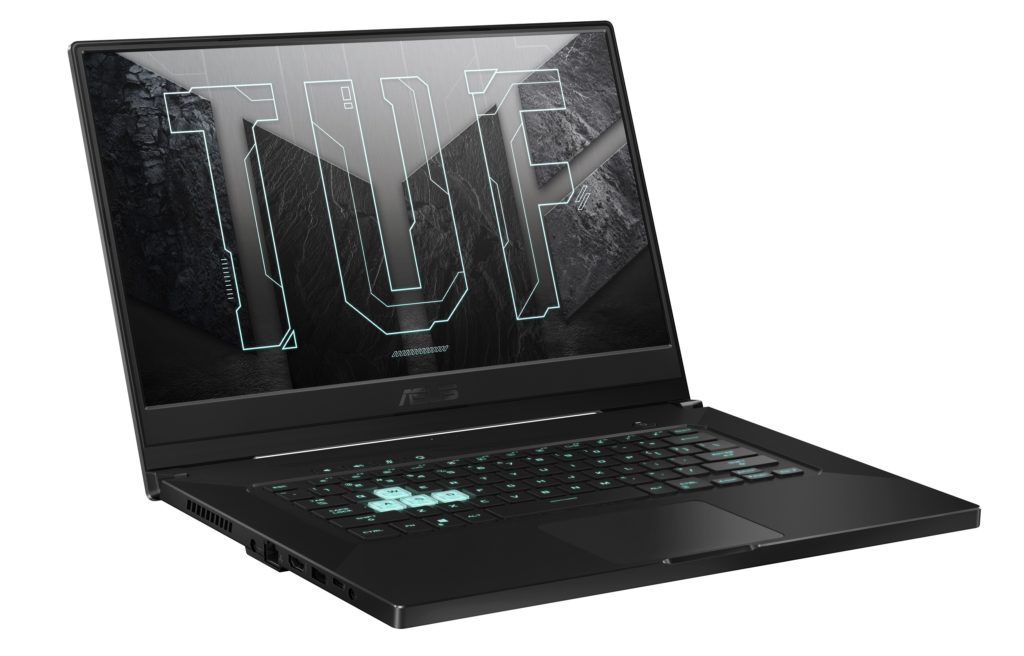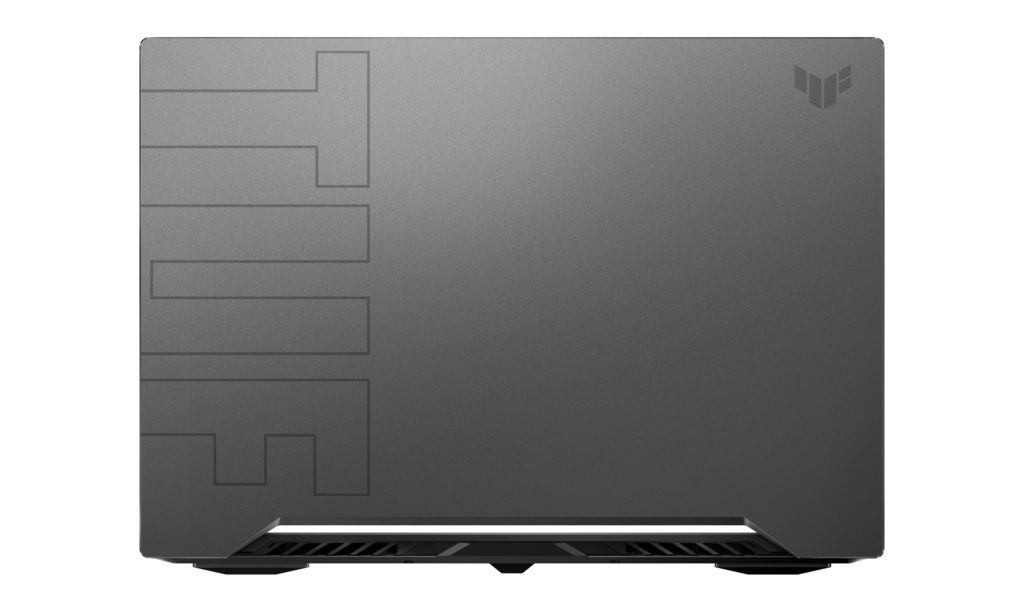Spoiler alert: They are awesome
We’ve received some new laptops for testing that have the new Nvidia RTX 30-Series GPUs, as well as the all-new Intel Core i7-11370H and AMD Ryzen 9 5990HX.
ASUS has kindly sent us the brand new ASUS ROG Zephyrus Duo SE and TUF Dash F15 to review, with more of the new range to follow. The first reviews will be up in the next week or so once they’ve been fully benchmarked and tested, but we can now share our initial impressions with you.
ASUS ROG Zephyrus Duo SE
It’s safe to say the original Zephyrus Duo is no slouch, but the Zephyrus Duo SE (special edition) turns the dial up to 11.
Key Specs:
- AMD Ryzen 9 5990HX (overclocked)
- Nvidia RTX 3080 mobile (16 GB)
- 32 GB DDR4-3200
- Dual 1 TB M.2 NVMe SSDs – 7 Gbps Read / 6 Gbps Write (e.g. fast AF)
- 2160p 120 Hz display – Pantone validated
- Secondary 2160 x 100 touchscreen display

If you’ve been paying even the slightest attention to what’s new in the world of PC hardware, it should be obvious that these are some seriously hardcore specifications. Every part of the system is a best-in-class component.
Perhaps unsurprisingly, the Zephyrus Duo SE has smashed every benchmark we’ve set with it. The CPU has been surpassing desktop-class CPUs in our tests, and the GPU is astonishingly good.
Hats off to Nvidia, their second-generation RTX cards are, frankly, exceptional. Through a combination of refinements to the core-tech powering these cards and improvements to DLSS, rasterized graphics have seen between 15-25% improvements to frame rates, while ray-traced games have received boosts up to a simply staggering 90% higher frame rates in comparison to 20-series cards.
Shadow of the Tomb Raider, running at 2160p with the highest preset, DLSS and RTX on, had average frame rates of 35 fps on the RTX 2080 we tested. The RTX 3080 has been reaching 66 fps… I didn’t believe it at first, and checked the settings, restarted the laptop and ran the test two more times. Sure enough, 66 fps. Un-be-lievable.
I’ll admit, as much as I admire the amazing visual effects that can be achieved with ray-tracing, I wasn’t convinced that we would be seeing games approaching anywhere near playable frame rates with it enabled for many years. Well, in just one generational leap it has gone from a frame-rate tanking frivolity to an essential game-changing feature up there with high-definition and high dynamic range. All we need now is for more developers to get on board and bring it to our games!

The second screen on the Zephyrus Duo SE at first seems like a gimmick, but it runs at a high resolution, has useful touch screen functionality, serves as an extension to the desktop, and can be configured to meet many use–case scenarios for everyone from content creators to streamers to hardcore gamers. I even tried using it as an ultrawide display for playing games on, and it worked perfectly (albeit a bit smaller than a traditional display). My favourite and most used setup for the second screen, though, has been running Armoury Crate (ASUS system monitoring and configuring software) and Netflix while I do work on the main screen, and it is so much fun to experiment with.
There’s much more that I could say in praise of the Zephyrus Duo SE, but I’ll save that for the review. If you’ve been tempted to buy one and wanted to wait for more reviews, don’t bother, just take the plunge and buy it, you won’t regret it.
ASUS TUF Dash F15
The TUF Dash F15 is ASUS’s attainable range of laptops, with military grade durability and above average specs and performance for what is essentially an entry-level range. The Dash F15 is a bit higher priced now, but it comes with some seriously credible components.
Key Specs:
- 11th Gen Intel Core i7-11370H
- Nvidia RTX 3070 (8 GB)
- 16 GB DDR4-3200
- 512 GB M.2 NVMe SSD
- 1080p 144 Hz Value-IPS display

The first thing I’m going to address is the display: 1080p and 144 Hz is a suitable pairing for the CPU/GPU combo, however, it also performs very well at 1440p, and even 2160p on some games. The Dash F15 range comes with either 144 Hz 1080p, 240 Hz 1080p or 144 Hz 1440p display options. Our review unit comes with the 144 Hz 1080p value-IPS display, and it’s perfectly fine for general gaming, but it has lacklustre colour vibrancy, and measures in with around 60% sRGB coverage.
The brightness is ok, IPS glow is almost non-existent (which we are grateful for), and viewing angles are good, but it’s hard to get past that underwhelming colour. With the 240 Hz and 1440p variants offering 100% sRGB coverage, I’d highly recommend paying the small amount extra for the much better overall image quality.
Display aside, the TUF Dash F15 gets far more right than it gets wrong. It’s far slimmer and lighter than previous TUF laptops, and gaming performance is excellent. I did find a few instances where the 4-core CPU was limiting the maximum frame rate achieved, and I imagine the excellent RTX 3070 Max-Q GPU is capable of better with a more potent CPU, but in general, frame rates in AAA titles are very good.
The single-core performance of the i7-11370H actually exceeded that of the Ryzen 9 5990HX of the Zephyrus Duo, but obviously having only half the cores affected its multi-core performance. In practical gaming tests, the Dash F15 comfortably outperformed a laptop with an RTX 2070, though that did have an excellent i7-10750H (8-core) processor, so it’s a better result than expected. I’m sure we will see other laptops with octa-core CPUs record much higher frame rates with the RTX 3070, but the Dash certainly won’t feel like a let-down at resolutions of 1440p or under.

If you’re wondering why ASUS wouldn’t just fit a different CPU to the Dash F15, I should discuss battery life. The Dash F15 is ultra-slim, can run games at ultra settings while maintaining good frame rates, but thanks to that uber-efficient i7 11th gen CPU, it can eke that battery out for up to 15 hours for basic tasks. That’s not a typo – 15 hours! Granted, if you’re gaming you may be looking at more like 3-5 hours (if you’re frugal with your settings), but that’s still an excellent result that outperforms everything we’ve ever tested by a considerable margin.
Again, there’s a lot of praise yet to be given to the ASUS TUF Dash F15, such as the excellent build quality, but that will be coming in the review next week. While it’s not an outright recommendation for purchase like the Zephyrus Duo SE (there are caveats regarding the screen and GPU options, which we’ll discuss in the review), the Dash F15 is a lovely gaming laptop, and if it fits your specific requirements, it’s a great option.

